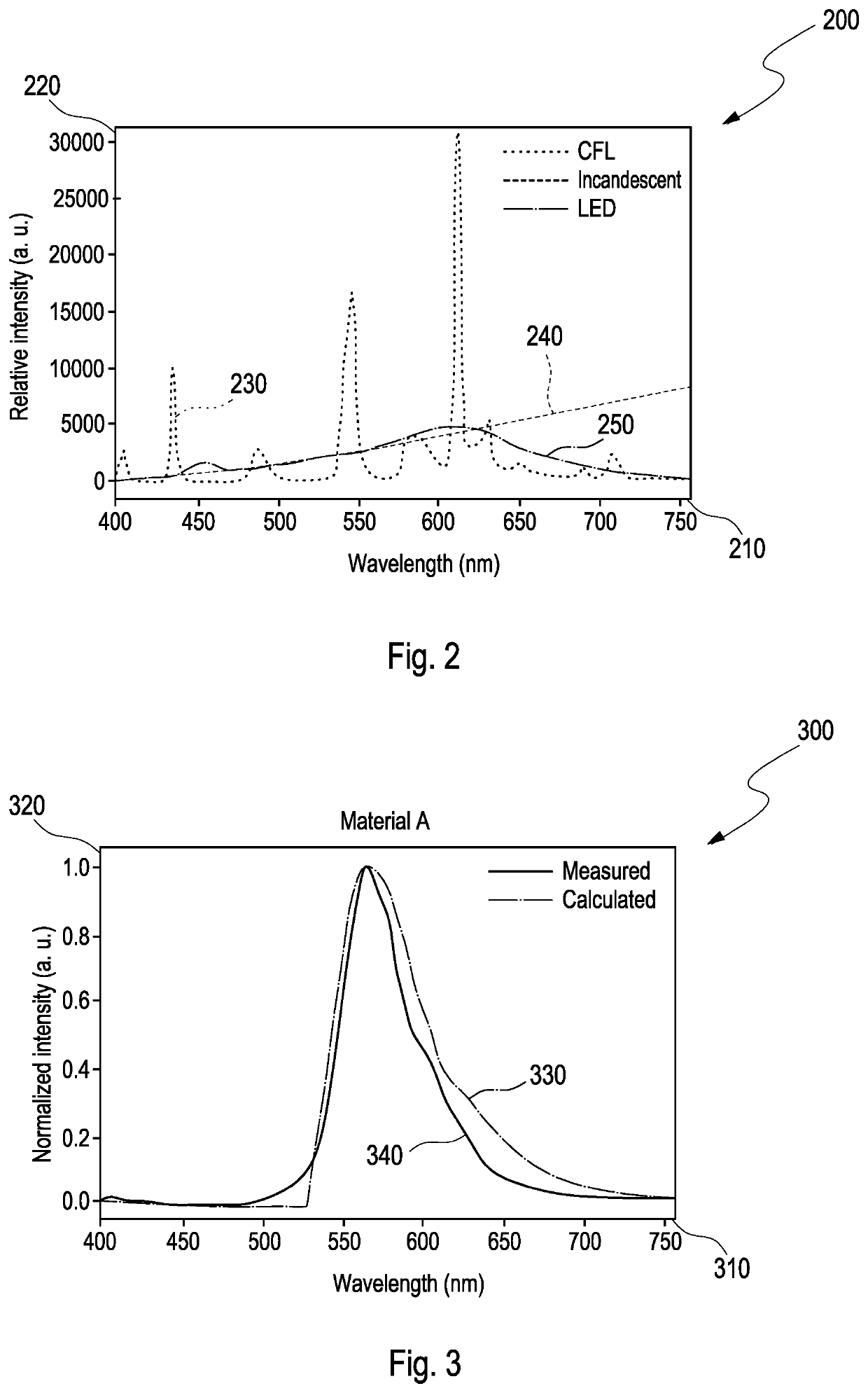Method and system for object recognition via a computer vision application
a computer vision and object recognition technology, applied in the field of object recognition via computer vision applications, can solve the problems of limiting visibility affecting the detection effect of objects, etc., and achieves the effects of facilitating computer vision applications, and reducing the difficulty of detection
- Summary
- Abstract
- Description
- Claims
- Application Information
AI Technical Summary
Benefits of technology
Problems solved by technology
Method used
Image
Examples
Embodiment Construction
[0090]FIG. 1A and FIG. 1B show schematically embodiments of the proposed system 100. The system 100 includes at least one object 130 to be recognized. Further the system 100 includes a sensor 120 which can be realized by an imager, such as a camera, particularly a multispectral or a hyperspectral camera. The system 100 further includes a light source 110. The light source 110 is composed of different individual illuminants, the number of which and nature thereof depend on the method used. For example 1 as indicated in FIG. 1A, three illuminants are provided and the three illuminants are commonly available incandescent 111, compact fluorescent 112, and white light LED 113 bulbs. The light source may also be composed of two illuminants as shown in FIG. 1B. For example 2, only two illuminants are provided, the two illuminants are custom LED illuminants 114 and 115. Illuminant 114 consists of three LEDs operating at 5 V. One LED is a 400 nm LED from VCC (VAOL-5GUV0T4), with an inline re...
PUM
 Login to view more
Login to view more Abstract
Description
Claims
Application Information
 Login to view more
Login to view more - R&D Engineer
- R&D Manager
- IP Professional
- Industry Leading Data Capabilities
- Powerful AI technology
- Patent DNA Extraction
Browse by: Latest US Patents, China's latest patents, Technical Efficacy Thesaurus, Application Domain, Technology Topic.
© 2024 PatSnap. All rights reserved.Legal|Privacy policy|Modern Slavery Act Transparency Statement|Sitemap



